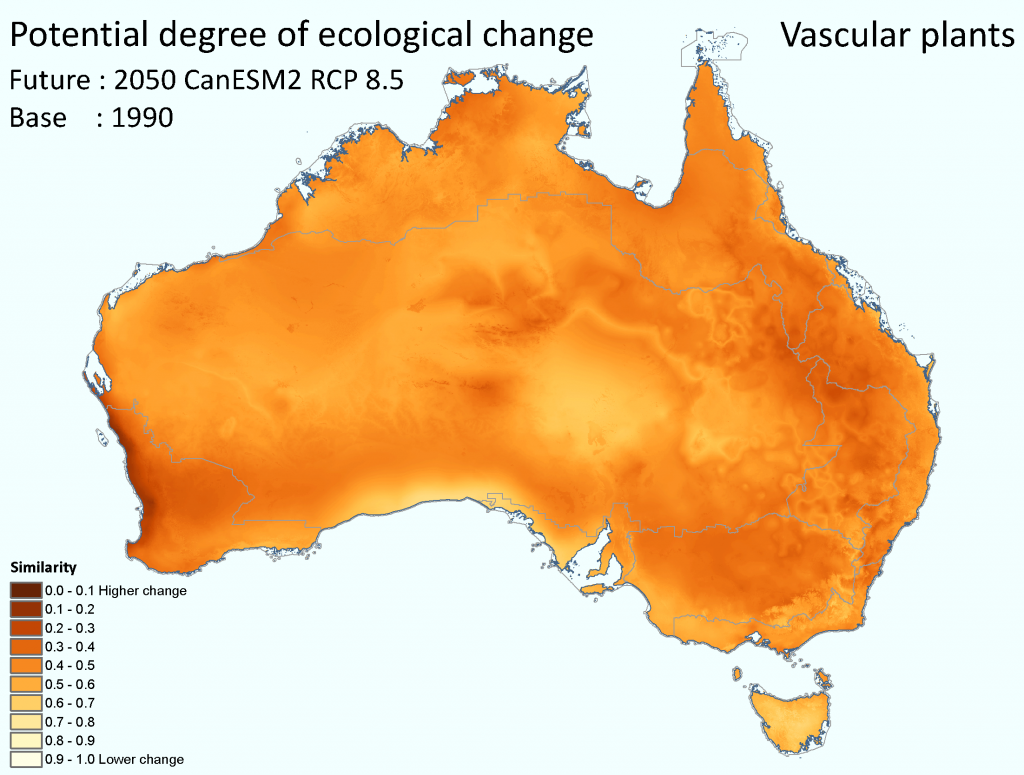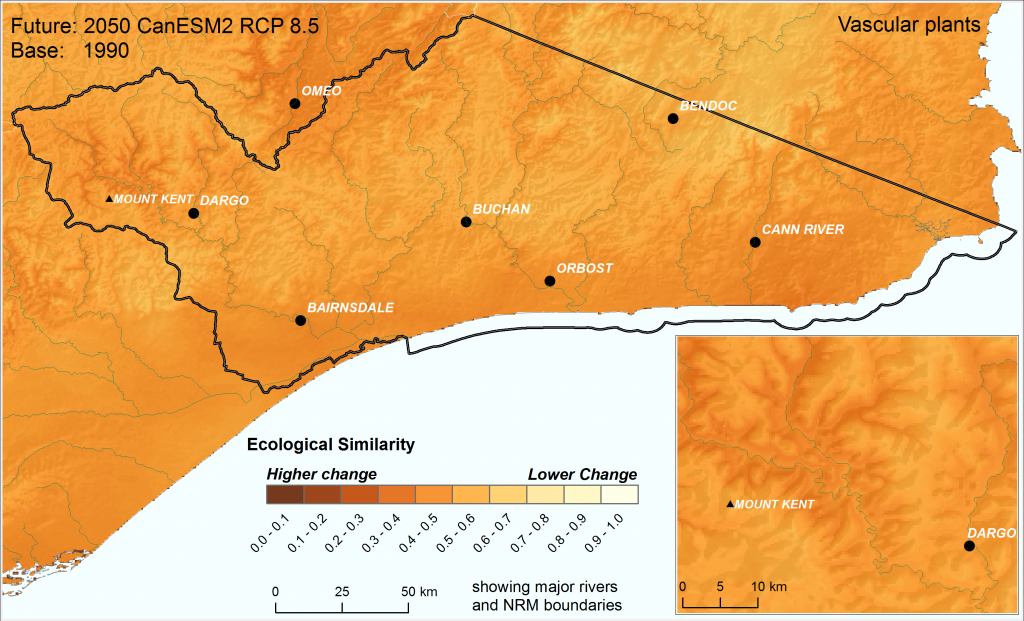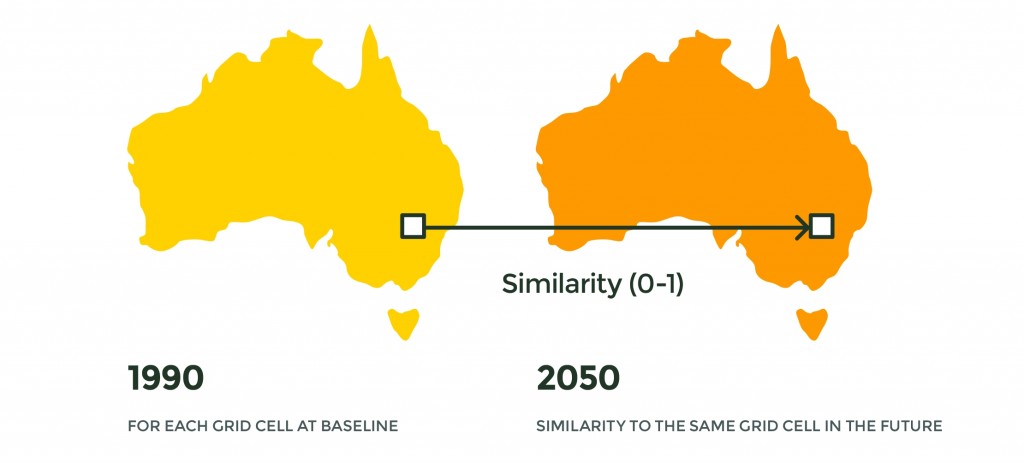Potential degree of ecological change
- The potential degree of ecological change is a measure of how much change in composition may occur at any given location.
- To model the potential degree of ecological change, we compare the ecological similarity of a location at two different points in time. We do this for all locations across Australia (figure below).
- The lower the similarity (approaching zero), the greater the potential for local ecological change.
- Where the similarity between the baseline and the future might be projected to be 0.2, or 20%, it can be helpful to think about this as only one in five species being able to persist.
- However, this should be viewed as an indication only, as species may be able to adapt in ways we don’t yet understand.
Click on the boxes below to explore examples at national and regional scales.
Find out more
Open allClose allThe potential degree of ecological change differs among different parts of Australia.

The potential degree of ecological change in vascular plants between 1990 (baseline) and 2050 for the high emissions’ hot CanESM2 climate scenario. Darker colours signify lower similarity and thus higher degree of potential change. While the legend shows 10 categories, the mapped data itself is continuous.
Overall, the high emissions’ hot CanESM2 climate scenario suggests that across most of Australia, only about 40% of present day vascular plants may have the potential to persist in their current locations by 2050.
Potential degree of ecological change varies among different climate scenarios and different biological groups. Refer to maps and data sets available on the CSIRO Data Access Portal for change across all four biological groups and the mild MIROC5 climate scenario.
There can be substantial variation in the potential degree of ecological change within a region.
Regional maps provide an indication of which parts of a region, and among which biological groups, there exists the most potential to change in biodiversity composition.
An example of the finer-grained detail is shown for the East Gippsland region.

Projected ecological similarity for vascular plants in the East Gippsland Catchment Management Authority area, under the high emissions’ hot CanESM2 scenario.
The coastal plains, major river valleys and some higher mountain ranges are projected to experience the greatest potential to change, leading to ecological similarities of only 0.2-0.5 by 2050 (50-80% of species affected). Some of the foothill areas by contrast, may retain an ecological similarity as high as 0.7 (only 30% of species affected) under this hot scenario.

A schematic showing how potential degree of ecological change is calculated from ecological similarity.
Ideas for how to use the potential degree of ecological change in planning are available under Planning Examples.
